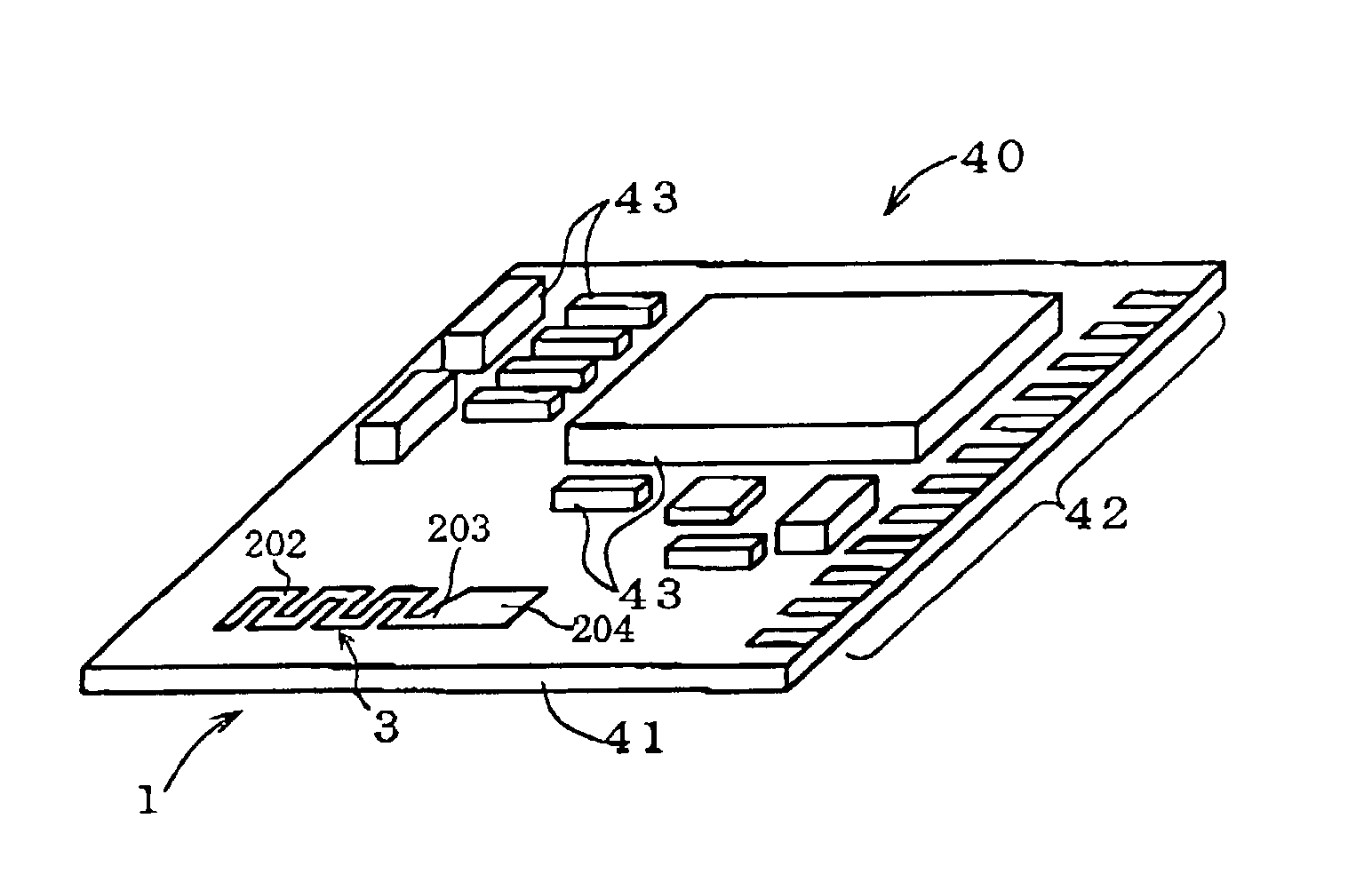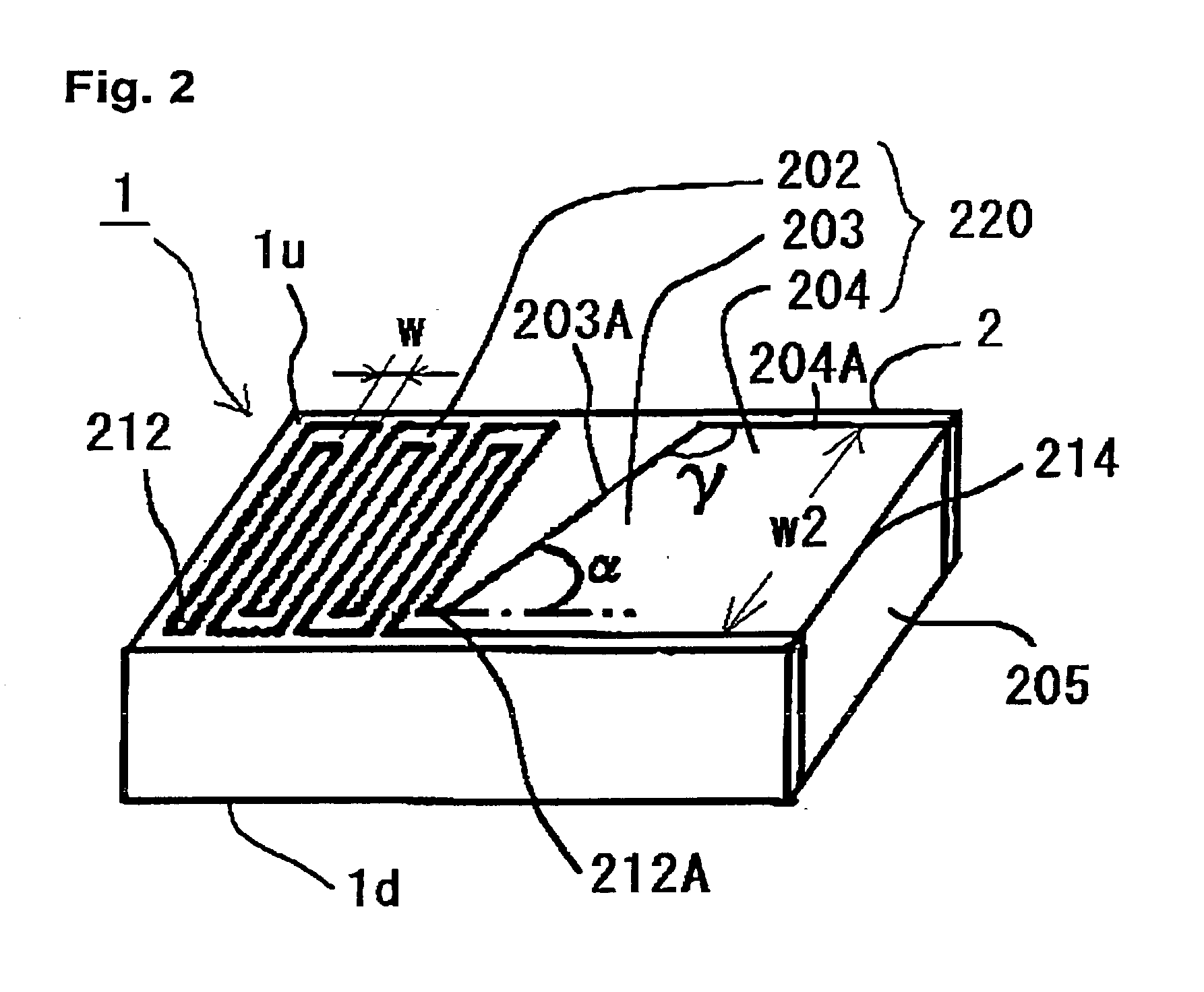Dielectric antenna for high frequency wireless communication apparatus
a high-frequency wireless communication and dielectric antenna technology, applied in the field of dielectric antennas, can solve the problems of deteriorating radio wave radiation characteristics, consuming or occupying substantial space, and more difficult to efficiently transmit high-frequency signals from a feed terminal to the antenna lin
- Summary
- Abstract
- Description
- Claims
- Application Information
AI Technical Summary
Benefits of technology
Problems solved by technology
Method used
Image
Examples
Embodiment Construction
5 -35.140 Example 2 16 -37.840 Example 3 31 -57.550 Example 4 49 -36.325 Example 5 70 -34.985 Com. Example nil -32.854
[0039] It will be understood from Table 2 that all of the examples having a tapered shape, i.e., including the taper layer or portion 203, identified as Examples 1-5, show an improvement in the reflection coefficient and the transmission efficiency as compared with the example not having the taper and identified as the Comparative Example. It was also confirmed that the difference in the taper shape between FIGS. 1 and 2 does not result in a significant variation in the antenna performance, as measured by the reflection coefficient and the transmission efficiency. However, the configuration of FIG. 2 may be preferred from a practical standpoint only because the configuration of FIG. 2 is simpler than that of FIG. 1.
[0040] Referring to FIG. 3, there is shown a dielectric antenna 1 disposed on another dielectric substrate forming an antenna module 40, according to anot...
PUM
 Login to View More
Login to View More Abstract
Description
Claims
Application Information
 Login to View More
Login to View More - R&D
- Intellectual Property
- Life Sciences
- Materials
- Tech Scout
- Unparalleled Data Quality
- Higher Quality Content
- 60% Fewer Hallucinations
Browse by: Latest US Patents, China's latest patents, Technical Efficacy Thesaurus, Application Domain, Technology Topic, Popular Technical Reports.
© 2025 PatSnap. All rights reserved.Legal|Privacy policy|Modern Slavery Act Transparency Statement|Sitemap|About US| Contact US: help@patsnap.com



